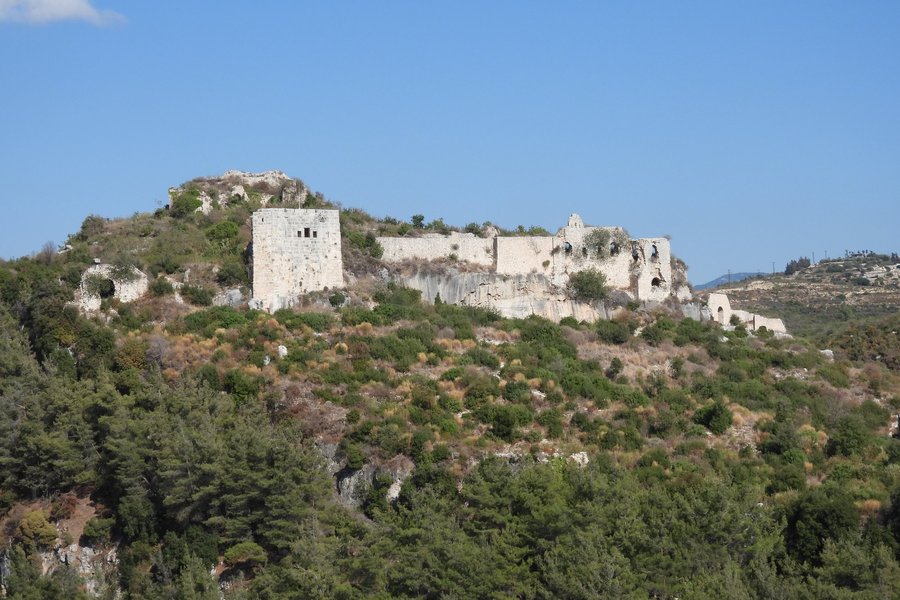
When I started preparing for a visit to this WHS, I was wondering why this site is not limited to the famous Crac des Chevaliers only, but also includes Saladin Castle. They are very far apart (160 km), and the Crac seems to be the truly outstanding one. It turned out that Syria in 2006 even saw potential for a serial nomination, as the original name of the nomination was “Castles of Syria”. As suggestions for further extension, it mentions the castles of Marqab, Qal’at al-Mudiq and Shayzar. They probably wanted to shift the focus away from solely being from Crusader times and honouring Byzantine and Islamic periods as well. In their heydays, these hilltop castles communicated with each other by lighting fires.
The Crac des Chevaliers still stands proudly in the center of Syria. It has suffered little damage from the recent war and earthquake. It’s also well-established as a tourist site, with entrance fees (foreigner pricing!), explanations in English and even a plaque. Everything about it is enormous, as it was made for horses. The soldiers stationed here could survive for two years without needing replenishments from outside. A visit nowadays requires a fair number of stairs to climb all over the place.
Although there is little decoration in the interior, the castle is impressive because of the ingenuity of its design. There’s the almost impregnable outer wall, then a moat, and then another full castle inside all of this! It held a mosque, baths, the Hall of …
Keep reading 0 comments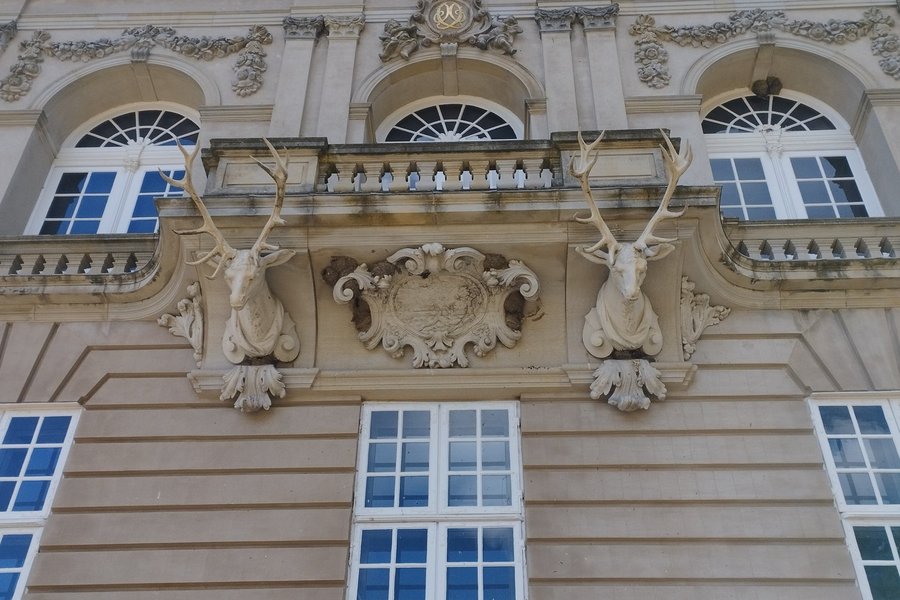
And there they were. The deer. Probably around twenty of them, resting unconcernedly on the short-cropped grass of… a local football field. I checked my map. Yep, they were definitely within the Core Zone of the World Heritage Site. I had spotted deer at a World Heritage Site devoted to deer-hunting. Could I count this as a tick? Only one problem: I was not in the World Heritage Site. I was sat on a train returning from Kronborg Castle. As the train rushed on the last thing I saw was a doe chewing placidly, staring at me through the goalposts.
Pity the hunter of World Heritage Sites! A limited time in Copenhagen, and yet I still had that itch to properly visit – to actually set foot inside – the Par Force Hunting Landscape of North Zealand, a site with a lowly 1.94 star rating on this site. And that meant dragging my family with me. So, three days later, there we were, partially retracing our steps to Klampenborg station. A quick crossing of the road found us entering the Jægersborg Dyrehave through the famous (among this community) oxide red-painted wooden gates. We turned right and – within five minutes – found our first deer. Just as the herd on the football pitch had been completely unfazed by the presence of the double-decker train passing 200m away, so too this doe and her fawn picking their way through the undergrowth were unbothered by the four tourists gawping at …
Keep reading 0 comments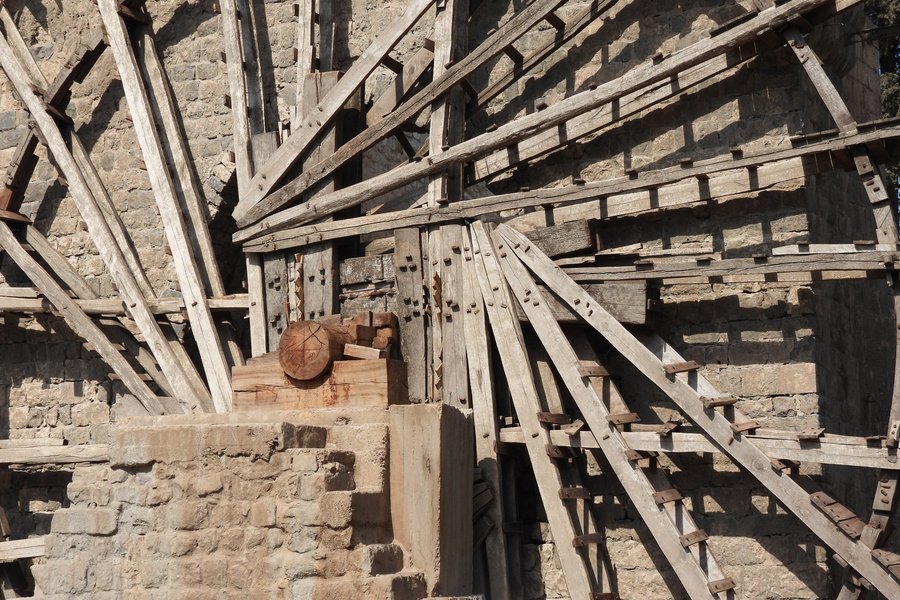
The waterwheels of Hama are one of the most iconic images of Syria. With their history of lifting water and supplying it into aqueducts to be used for irrigation since the Middle Ages, they should be a shoo-in whenever they get nominated, as every WHC loves a bit of water management. In addition to the technology, there's a whole traditional system of skilled noria carpenters behind it as well.
On the ground, however, they are disappointing. At least when you visit out of season, as I did: the wheels only turn in winter and spring, as only then is there enough water. The Orontes River in September was almost empty, except for the heaps of plastic trash that are unfortunately so common in Syria. It is also hard to see the large wooden wheels up close or to get to good viewpoints to take pictures. The best point in the city center is from the bridge.
We saw five of them in the city center; the other twelve or so remaining ones are scattered around the countryside near Hama. According to my guide, they are more impressive as they have a finer natural setting.
Hama itself has preserved its small historical urban zone quite well (at least that part that was left after the 1982 anti-Assad uprising, which was brutally ended), and you can follow the trajectory of the aqueducts. All but one of the waterwheels have survived the war (one was burned deliberately in 2014), but they suffer from …
Keep reading 0 comments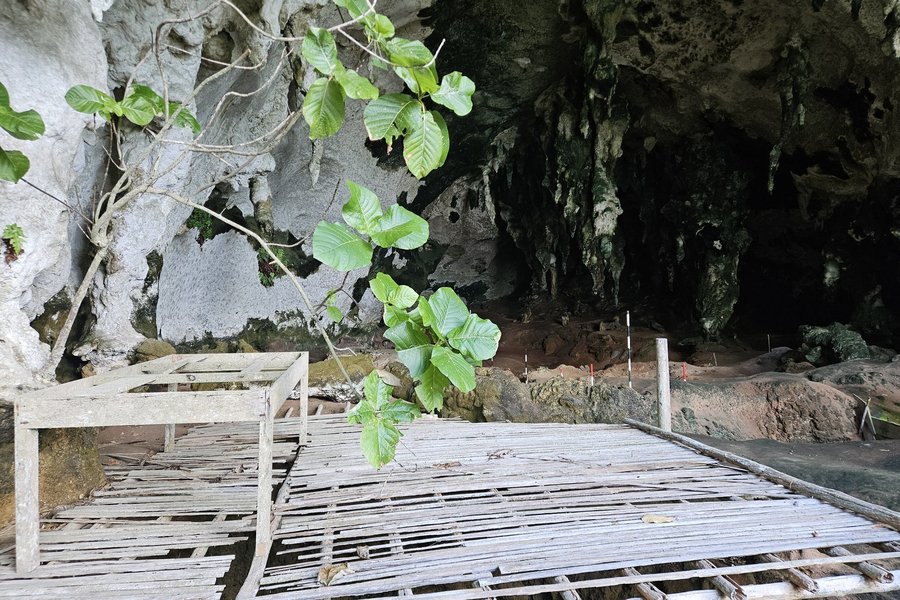
I visited the Tabon caves together with my adopted Norwegian family (Randi & Svein) as part of our Tubbataha trip in April 2025. There are 7 caves you can visit on a guided tour. We were the only English-speaking visitors and thus got a guide just for the three of us. Even though it is a cultural site, about remains of early humans, it is probably the natural beauty of the caves, that strikes you first. The caves are reached by a board walk along the coast. They are connected by steep paths within the forest and each one is somehow unique. Most remains (especially burial jars) were found by Dr. Robert Fox. One of the caves still has the platform and digging holes of his last mission. There are a few replica jars in the visitor centre, but if you want to see the real deal, go to the Nation Museum of Anthropology in Manila (free entrance). After the cave hopping, we walked back to the visitor centre via a path in the forest. It was very hot and humid, but luckily there is a beach right next to the visitor centre, straight out of a dream holiday ad.
How to visit
There are daily tours at 9am and 1pm. You are supposed to prebook. This is oddly done via their Facebook page https://www.facebook.com/nmptaboncaves. We did not prebook, but arrived shortly after 9am and were graciously included into the group, that was already watching the safety video. The …
Keep reading 1 comment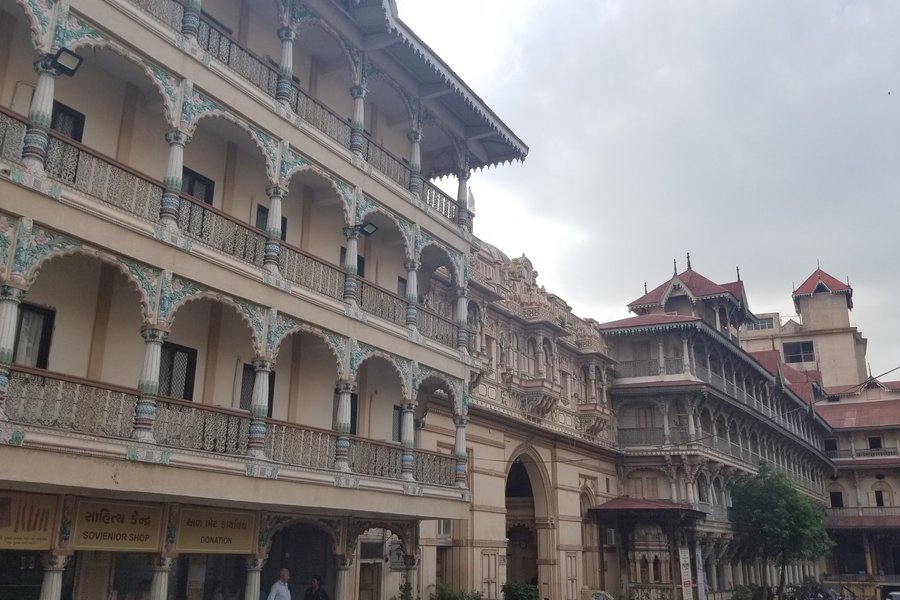
I visited Ahmadabad twice. First was just to go to the wild ass sanctuary and I spent a quick hour in the city to "tick" this off, not even knowing where exactly the core zone was. You can see the old style building fronts all over town center so it wasn't much different. On my second trip in the area I wanted to tick this off better and did the entire core zone walk, which actually takes less than an hour.
There also many packages for this Heritage Walk. Those are not more than 2h and if it involves guiding that's not a lot of time. I think it was maybe a mile of walking overall. I took a auto-rickshaw to Jama Masjid aka Jama Mosque which also meant sitting around for a while. It's a relaxing place, quite pretty, even the caretaker let me take pictures inside even if it wasn't allowed. I would say this is nice but not exactly the part Ahmadabad would be inscribed for. From here you can leisurely walk along the hike. It has a few signs and is generally easy to follow. Not everything here is worth checking out. I would have a quick look at the Fernandes Bridge (inscribed as Fernandez as if there was a latino person in the area in the 19 hundreds), then Dalpatram Chowk and eventually the Swaminarayan Temple which is definitely the highlight of the tour. When I was there it was a bit under renovations but …
Keep reading 0 comments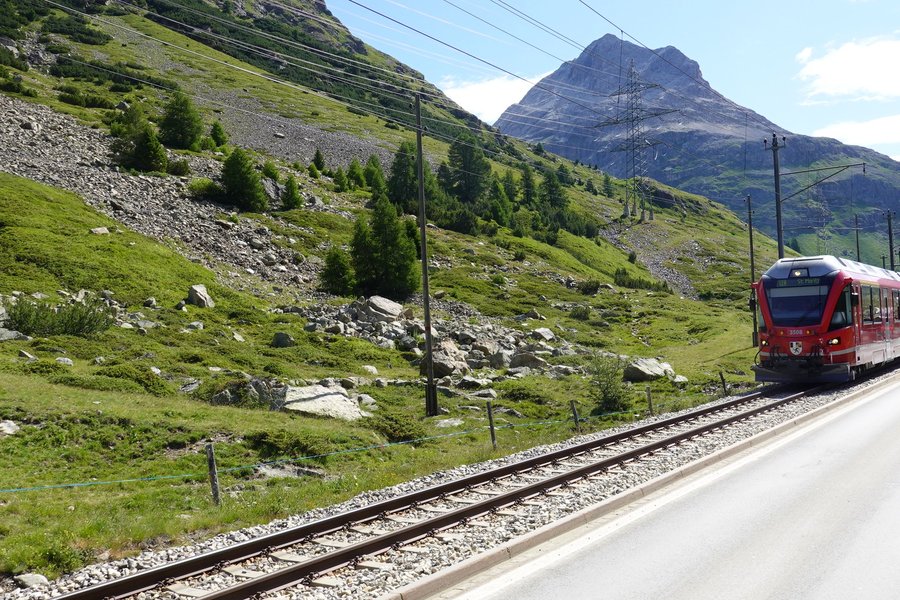
Ask a child to draw a train and they will draw the Bernina Pass train for you.
Everything is there to remind us of our tender childhood and the archetype of electric miniature trains: the railway track, the red locomotive, the tunnels, the bridges, the snow-capped mountain peaks reflected in a lake... the Swiss train that makes us dream in all its splendor!
We had already crossed the Bernina Pass once when we went to Italy in 2019. In Tirano, after having to let the red train pass in front of us on the road like a common tram and not at a conventional level crossing, I swore to myself that I would come back because I found it so strange that a train could take a street normally reserved for cars in any other place.
Beyond that, among the Alpine passes I know, the Bernina Pass is, in my opinion, the most beautiful. We had stopped at the parking lot of the pass inn with Wilson I (today's Wilson is Wilson II). From there, a footpath descends to a small lake and a small railway station.
This year, when planning my trip to Tunisia, I thought my first stop would be the Bernina Pass, but I overestimated the distances and stopped early. This wasn't a bad thing because it made me realize the very essence of the site's inscription: the need to open up a region that is difficult to access by train, with all the technical complications that …
Keep reading 0 comments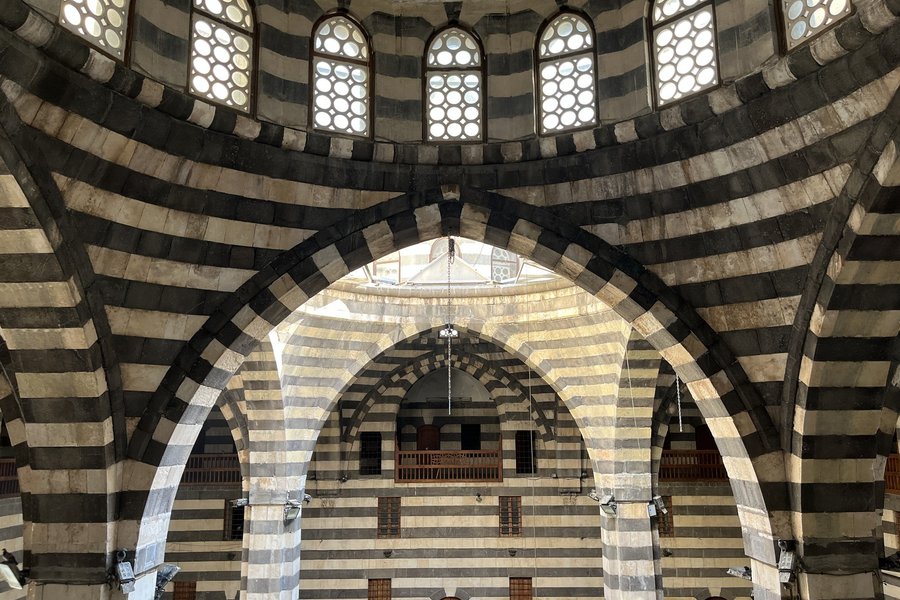
Somehow Damascus felt very familiar: it is the quintessential Old Town of the Middle East, with narrow alleyways and busy souks selling everything, from spices to lingerie. Numerous comparisons came to my mind: Baghdad's Old Town, which is a 'new' construction, Tabriz has a similar covered bazaar, Cairo has more monumental mosques, and Istanbul has more imposing stand-alone buildings. But Damascus still has the fully intact historic fabric, and it is in authentic use by its population.
Behind small, unassuming doors, whole worlds open up. This both counts for today’s pleasures as well as past splendour. The weekends and evenings are very lively here: there are so many cafés (selling coffee, berry juice and ice cream) and shisha lounges in the courtyards of elegant converted townhouses. These are frequented by women as much as by men. It is no problem at all roaming around on your own in the Old City during the day or the evening.
I stayed for two nights in Dar Al Mamlouka, a traditional townhouse converted into a boutique guesthouse (a bit similar to those you find in Morocco or Tunisia). We visited two of the largest former townhouses as well. Maktab Anbar is a mid-19th-century mansion, built in the traditional Damascene way with three courtyards (one to receive male guests, one for the females in the family, and one for the servants). Especially the second one here is splendid, with ornate designs in the Damascene style. A garden with flowers and lemon trees, and the …
Keep reading 0 comments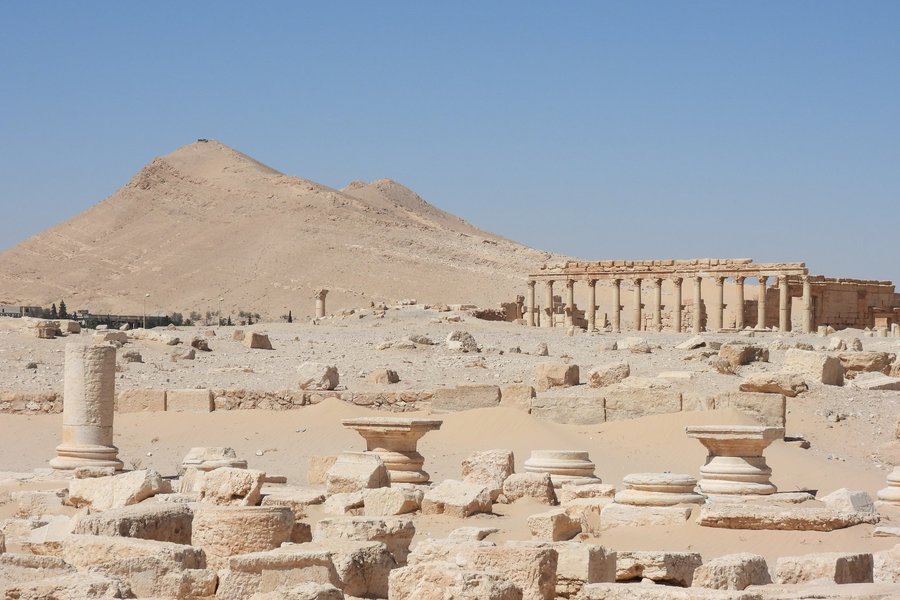
Palmyra is pretty far ‘out there’: on the 3-hour drive from Damascus, the only thing we saw was desert. It still needs a special permit to access (I visited in September 2025), but once you’re at the archaeological site itself, there is nothing: I guess it is “under control” of the Ministry of Tourism somehow, but there is no oversight, no tickets are being sold, etc. Five Bedouin men await the daily trickle of tourists with camel rides and souvenirs to sell. They are quite desperate and will follow you around.
It's a huge site, ruins everywhere. We spent 2.5 hours there, and although I made it to 12,000 steps, we did not see it all. We arrived around 9 a.m. to beat the scorching heat in this area, but at 11.30 the sun was so fierce that I retired to the shade inside the bus. And there were few other tourists, of course, only some Syrian daytrippers from Damascus. It was like having the Acropolis all to yourself.
The Temple of Baal used to be one of Palmyra’s main highlights. It lies uphill from the main residential area. Its outer walls were converted into a citadel in Arab times and that has survived pretty well. But inside, now only one lonely arch can be seen, plus a huge pile of rubble where the Temple once stood. Even if you, like me, have never been here before and you don’t really know what you’re missing, the devastation is shocking. It …
Keep reading 1 comment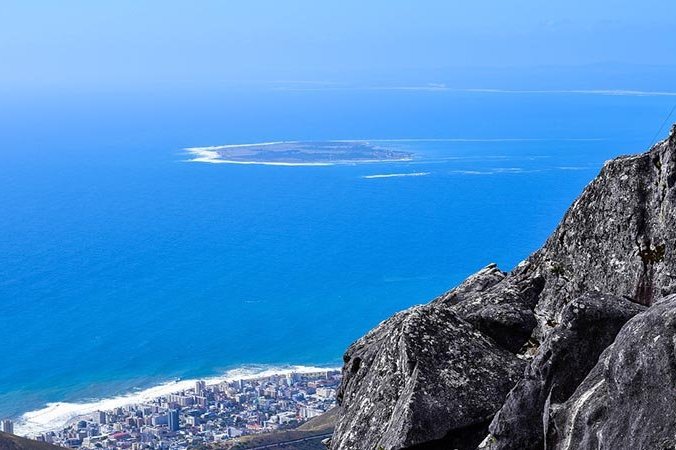
I visited Cape Town during April of 2025, which is near the summer of the Southern Hemisphere. I created a Youtube video on my channel for a more interactive way of reviewing.
https://www.youtube.com/watch?v=m3sRuFqcAzY&ab_channel=MscBonbon
I visited Robben Island in April 2025. Tourists have to book an official tour to visit this island. I booked a noon tour which is a mistake because it is blazing hot in the summer. I'm not sure why the but local guide, who was an ex prisoner, decided to talk about his experience and the history under the sun in the courtyard with no shade for 20 mins plus. So I would suggest going for morning tours. When I lined up at the docks, I didn't have to wait in the dock for too long and got on the boat straight away. My advice is to not arrive too early at the docks. Overall it was a good experience, and one definetly should visit to fully appreciate the hardship the prisoners suffered here. I understand the need of a tour bus because it is quite a barren and big island and you don't want stragglers or people to wander and get lost, or worse cause damage to places. I learned about some more famous prisoners (because I think everyone knows about Mandela) but actually Robert Sobukwe was also a very influential figure in the movement. Visiting this site will take a full day of your itinery even if you start early because the ship schedule is …
Keep reading 0 commentsmarc Rouserez
Arab-Norma Palermo and the cathedrals of Cefalu and Monreale
Arab-Norman Palermo (Inscribed)
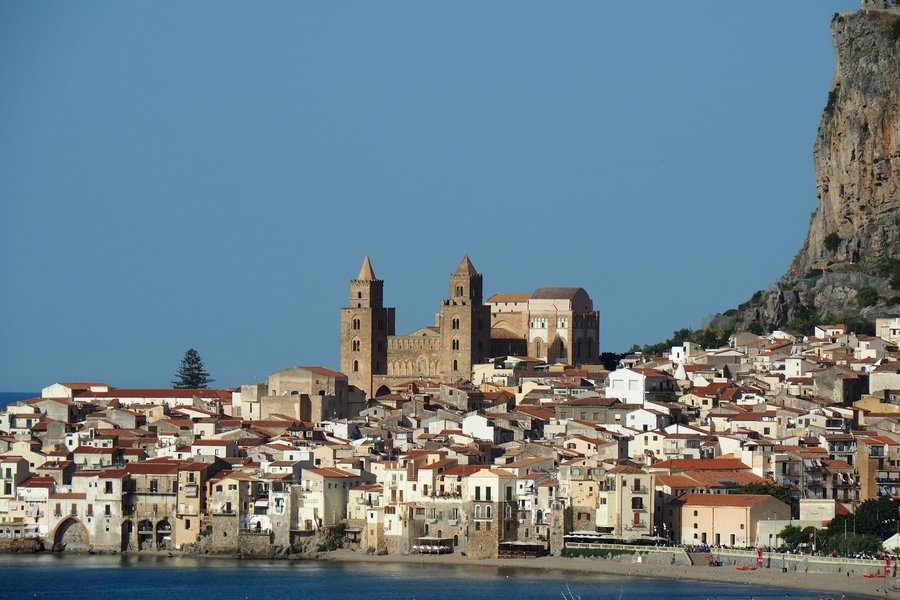
I had kept something up my sleeve in Palermo to make sure I caught the night ferry to Tunisia at the right time.
I stopped in Cefalu, about seventy kilometers from Palermo, with Wilson the mobile home with the aim of visiting its duomo the next day, and then going to Palermo to visit other sites of the Arab-Norman serial UNESCO heritage site.
In Cefalù, I parked discreetly in the large car park of the Hotel Santa Lucia, some distance from the town centre. This is the good thing because when you walk there, the town gradually reveals itself, with a beautiful view of the cathedral, the village and the Mediterranean (the introductory photo).
This cathedral, like the other properties in the list, has the particularity of bringing together different cultures of the 12th century AD: Western, Byzantine and Islamic, which seems unique to me. After admiring the main façade of the monument and once I entered the nave, the beauty of the mosaics in the apse amazed me: Christ Pantocrator and the secondary figures (especially angels) are fascinating in their majesty and harmony. Could we, as a fusion of cultures, consider this cathedral as a symbol of tolerance on the part of the Norman king Roger II, its builder? Or is it the expression of an ego that wanted to bring together the most skilled architects and craftsmen of his time on the site of his future burial? I don't know, but today I was delighted.
It was my …
Keep reading 0 comments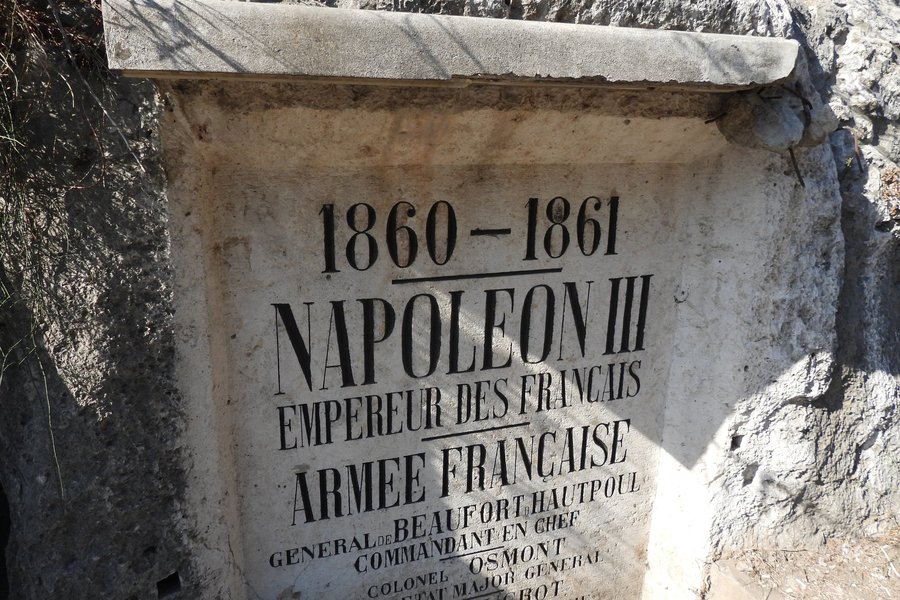
The commemorative stelae of Nahr el-Kalb have always fascinated me, although this quirky site probably already has earned enough international recognition by its inscription in the Memory of the World Register (2005). I also saw such a passage in Saudi Arabia, at Jabel Ikmah, with more than 300 historically significant carved inscriptions in different scripts by different civilisations passing through. Nahr El-Kalb is definitely more “Lebanese”, a bit chaotic, commemorating various foreign invaders that marked the difficult passage of this natural obstacle on the Lebanese coast and political influencers that just wanted to make a statement.
The site lies just off the main highway between Beirut and Tripoli. The turnoff is signposted, and the cliff with the stelae and inscriptions starts right there: so you have to be careful where you park and where you walk while taking pictures, as many cars will come around the corner at high speed. It is good to bring your own map to see which inscription is where, as there is little information on site. I have added the most appealing ones as Points of Interest to our map.
We parked right in front of the Napoleon III stele; it is the easiest to recognize as well. It dates from his 1860–61 intervention in Lebanon. To the left of it are two very old neo-Assyrian ones – the script here is faded, but the distinctive relief depicting a person can still be seen. There’s no chronological order among the inscriptions; people just used …
Keep reading 0 comments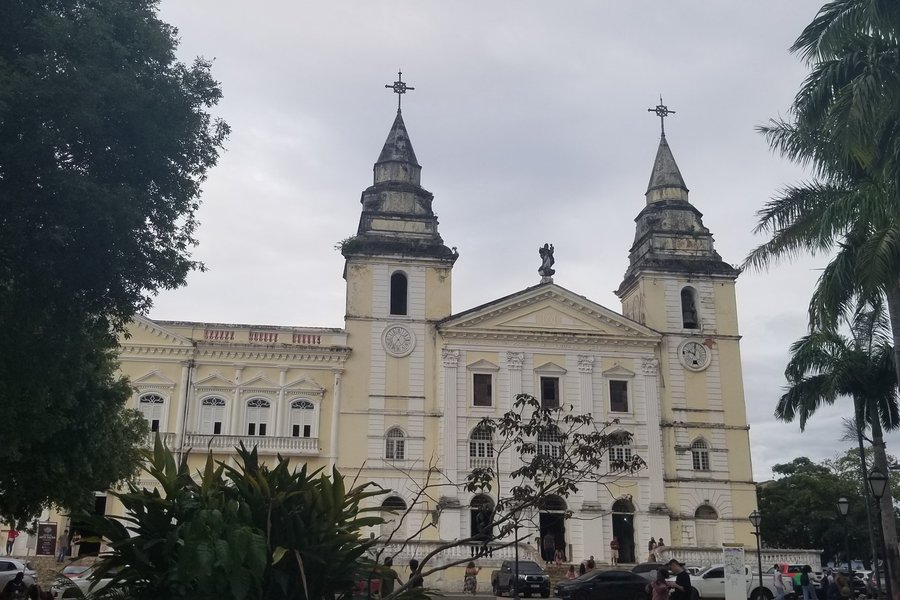
After returning from Lençóis Maranhenses National Park it's nice to be back in the city, and the area around the São Luis airport isn't exactly what you want either. I got a driver to take me to the historic center which is still half an hour away but it was totally worth it. You get "old town" cobble streets, old buildings, it's basically like going to an old French city. It's also amazing enough that you get the French remains in Brazil seeing that most was Portuguese inheritance.
I didn't spend much time here. From the palace dropoff it was 1-2 hour max to see everything. There is a map to see where to go. The area is quite small and none of the buildings but churches were open. I was also not that interested in the churches if you want to know. The streets were colorful, quite clean, VERY smelly for some reason (there was also a line of thunderboxes...) but I was happy to be in the area. I had dinner here to enjoy the scenery and surroundings, atmosphere. You get the usual avoidable issue like penny pinchers and overpriced drink stalls but no biggie. I can't give you a suggestion of where to start but at some point you'll hit the park in the center which is when you want to stick west and also there is a very cemented park at the west side. Because everything here is still used for courthouse, presidential palace (ok local …
Keep reading 0 comments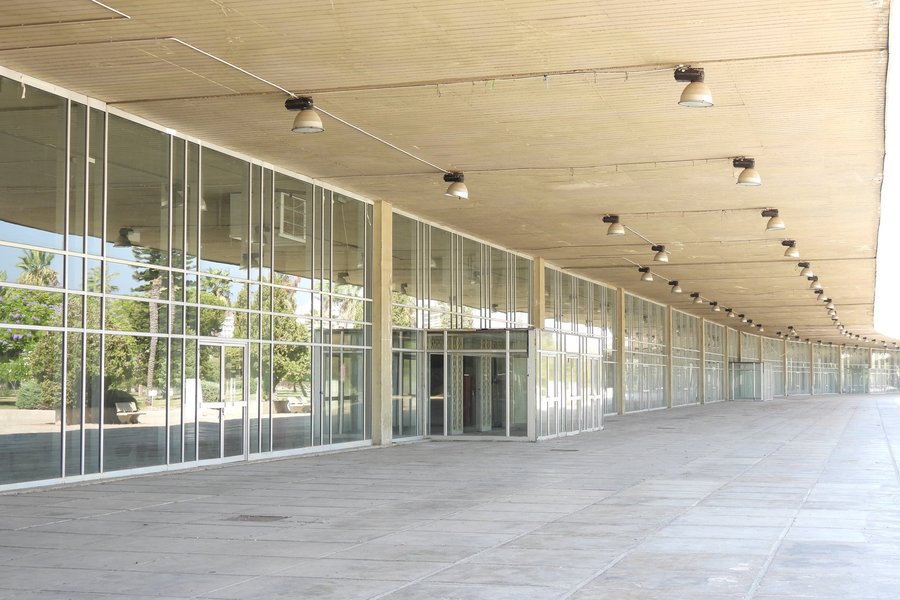
A visit to Tripoli’s Rachid Karami International Fair Grounds not only brought me one ‘tick’ closer to 1,000, but it also corrected a very annoying near miss that I had in 2014. At the time, I went to the Lebanese city of Tripoli, arrived by bus and then walked eastward into the Old Town (a TWHS on its own). This WHS, however, lies about 500m west of the bus station. And it is so large that it would be hard to overlook. But at the time, I couldn’t imagine that this would ever become a WHS.
In September 2025, I organized a day trip to Northern Lebanon with a driver/guide from Beirut. When I booked and requested my itinerary, the guide said that he had to arrange a permit with the authorities beforehand, which required stating his car's plate number and his and my names. Therefore, considering the previous reviews where people appeared to have entered freely, the entry policy seems to have been revised. When we arrived, it turned out that the entrance indeed is guarded by a single security guy, but it all seemed friendly and low-key, so you might be let in if you ask nicely.
Today’s visitor entrance is at the main entrance of the fairgrounds, so you discover the site the way Niemeyer planned it. You walk up a ramp and, from beneath a portico, you get a sweeping view of the main element, the Grand Cover or Grand Canopy, which is shaped like an …
Keep reading 0 comments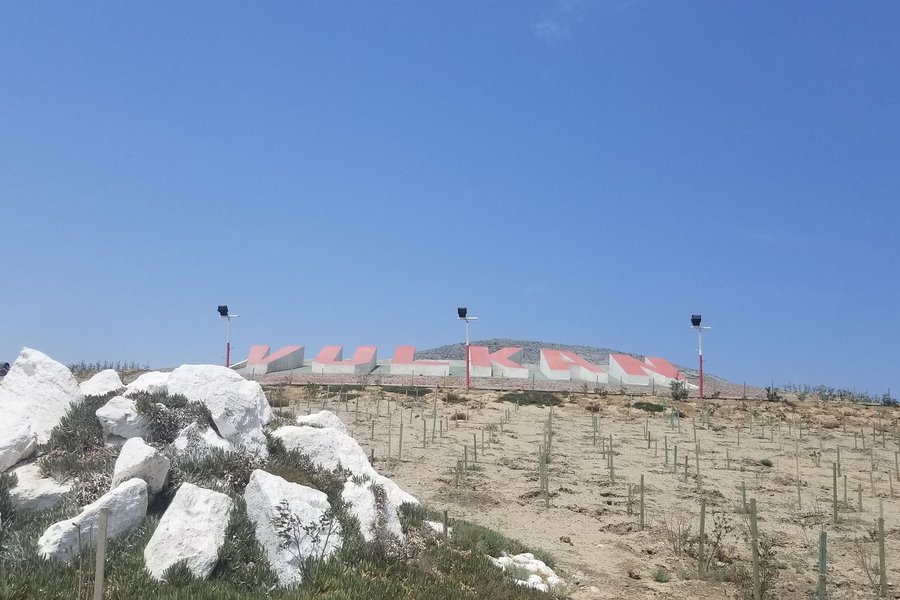
Honestly I'm not 100% I went to the right place although I think I did. Pictures just look different than the previous reviews which could come down to them being at the wrong place or it just looking so various at different seasons. For the second I can't say much and the first is tricky. There are MANY mud cones around Azerbaijan and Baku alone. You tend to visit this by coming to the rock art with mud cones in the first place and there are rock arts at the north of the city next to the tar lakes - well I think you understand that these mud cones aren't special enough on its own. I think it's cool to visit one either way. Google map didn't have ANY information on this place so I just guessed it. Turns out OpenStreetMap has the place in a funny way and it's quite accurate. Surely the parking lot is just a large area of gravel rocks that are used by the trucks to get refilled but the parks are maintained, the gazebo is open. You cannot officially walk up to the volvano (oh sorry...mud cone) but obviously you just do it anyway. I confirmed beforehand with a trucker filling his car who unfortunately guessed I'm American but yes, you are at a mud cone and you need to walk over the hill to see it. Before you get here, by the way, the road takes you through lots of gas pumps, a …
Keep reading 0 comments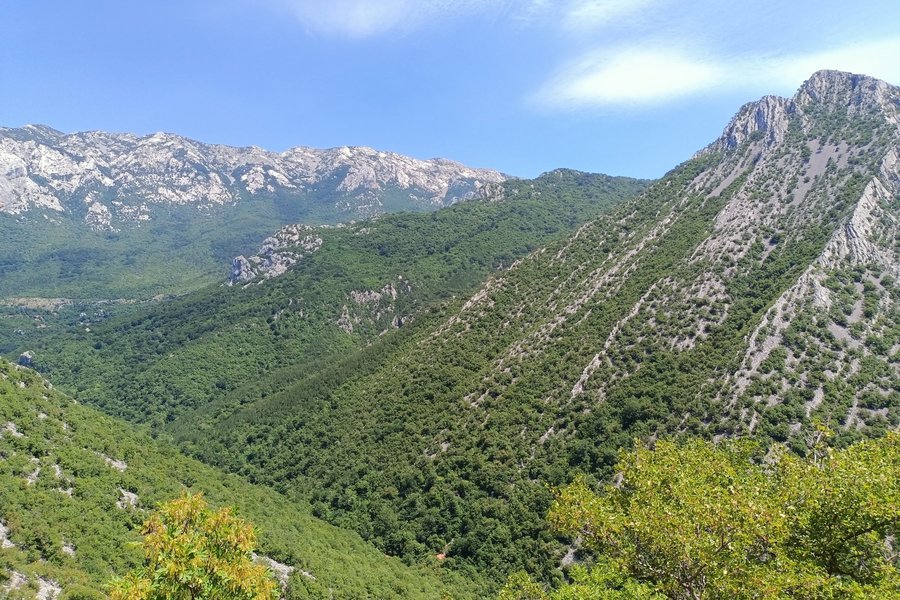
Hi everyone, this is my first review, so any comments are welcome. Reviews from other travelers have been helping me to plan my trips for the last two years, so I will be glad if my text inspires other peoples managing their own adventures.
For the last year I have been wanting to visit one of the beech forests of Europe, but it did not happen over several trips (the closest chance I got was during my stay in Brussels, but Christmas is not the proper time for forests!!!).
So when I was planning my trip by rented car from Zadar to Istria I realized that now it is a time to make stop in either Paklenica NP or Northern Velebit NP: both national parks are parts of both the UNESCO site "Primeval Beech Forests" and the UNESCO tenttive site "Velebit Mountain".
The entrance to Paklenica is located right next to the coastal road, so the choice was not difficult.
Just driving through the main (southern) entrance to the park and walking forth and back along the gorge stream seemed boring to me. So I studied the map in the brochure on the park website and found that I can get to the middle of the creek along the trail down the western slope. And by Google Maps I found a parking area not far from one of trails.
All I needed was to find (or make) a shortcut between the road and the trail.
Indeed, I have found a …
Keep reading 0 comments
After visiting the grande theater in Manaus I also managed to visit the theater in Belem on my trip this time around. Both were built during the Amazon Rubber Boom of the late 19th. If I remember correctly the theater wasn't very popular before but now stands as a marvel and enriches Belem a lot.
For the one in Belem you must join a guided tour that takes you through the lobby and the main theater. It didn't go up due to renovation so I don't know if you normally visit there. I think you mainly go there for photos which most people were interested in taking anyway. The program starts every hour between 9am and 5pm (sans 1pm) and only mornings at the weekend. It's probably also closed for events so check first. On Wednesdays you even get free entrance which happened for me but it's only 10 real (5 with discount) so wouldn't be the end of the world. Note that there is a 40 people limit and they didn't seem to care about that on Wednesday as they don't even hand out tickets although they might care if it's A LOT more than 40. The lobby doesn't hold many people and the main area gets a bit tight at ~100.
So my tour was in two parts. First you assemble in the lobby, get a talk from the guide and can take photos for a good 5 minutes before there's MORE talk. The lobby is very nice …
Keep reading 0 comments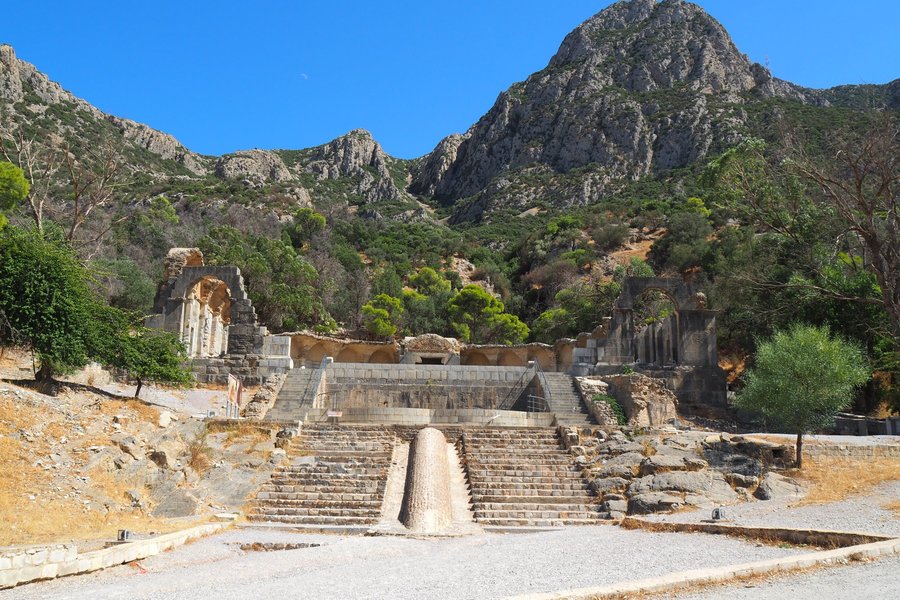
This is a multiple UNESCO site that I really liked because it requires a mental connection between several places that are several dozen kilometers apart from each other. Upstream, the catchment areas called nymphaeums or water temples, of which the one at Zaghouan is a part, downstream in Carthage the cisterns of the Maalga and the Antonine baths, and between the two the Zaghouan aqueduct itself.
The aqueduct has nothing to envy of that of the Pont du Gard in France, which is 48 m high and 50 km long; that of Zaghouan is 34 m at its highest for a length which totals almost three times that of the Pont du Gard, which is a technical feat comparable to the amphitheater of El-Djem.
But what is most interesting about Zaghouan is precisely the interconnection between these three elements: the capture of the water source, its transport, and its use in Carthage.I discuss the Antonine Baths on the page dedicated to Carthage.
Coming from Tunis, a beautiful, long, aerial section of the aqueduct is visible along the P3 road. It's hard to miss, as it marks the landscape. It's worth turning off the road to the left when the aqueduct bends and following it until the road leaves it. It's established that the aqueduct supplied water to the city of Carthage, but what about agriculture? It seems not.
The Zaghouan Water Temple is located a little outside the city of the same name, at the foot of the Jebel. The …
Keep reading 0 commentsShandos Cleaver
Off the Tourist Track in Sumatra
Ombilin Coal Mining Heritage of Sawahlunto (Inscribed)
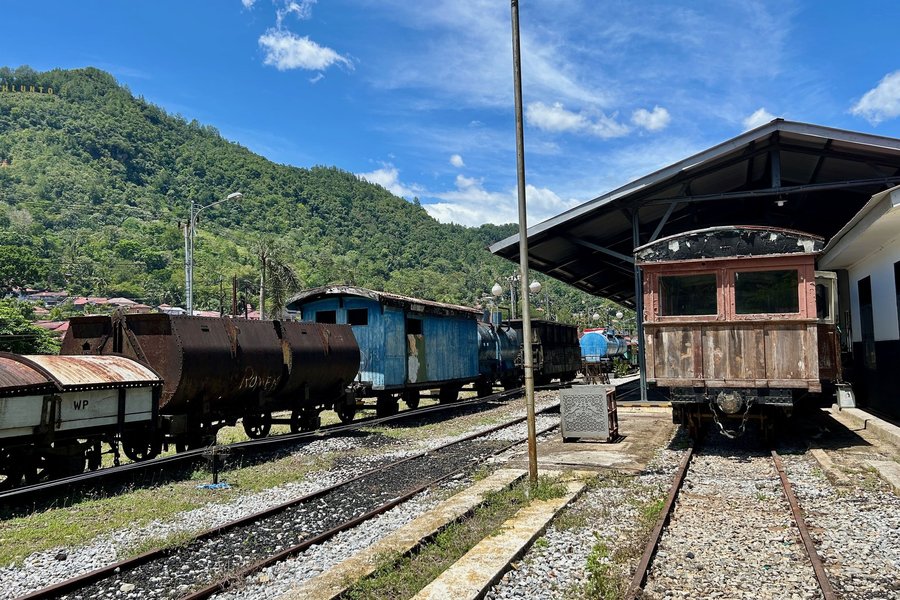
Tourism is a funny thing. While the island of Bali in Indonesia is swamped by tourists, when we visited the old coal mining town of Sawahlunto on Sumatra, we were probably the only foreign tourists in town, despite the world heritage listing. That even applied in parts of Padang, the large coastal city nearby.
Sawahlunto owes its existence to the coal mining that took place around and even under the town. It was mainly constructed by the Dutch in the 19th century and their stamp still lies on the town, with many Dutch colonial era buildings and a church visible on a stroll around the centre of town, alongside industrial remains. We stayed a night at the historic KHA Ombilin Hotel, part of the listing.
There are multiple museums dotted around town, that supplemented our self-guided walk around the town. Each costs 50,000 IDR for foreigners and the staff will insist on guiding you through them. Our favourite was the Museum Lubang Tambang Mbah Soero, which includes a tour of an old mining tunnel. The Museum Goedang Ransoem was a former public kitchen - quite unexpected and intriguing. The Museum Kerati at the train station wasn't as interesting, except for the old steam engine.
We enjoyed our visit to the town more than expected, partially because it's just a relaxed place and easy to walk around. Come night fall, there's also plenty of food stalls around Lapangan Segitiga park and near Terminal Sawahlunto, the bus terminal. It's hard to imagine …
Keep reading 0 comments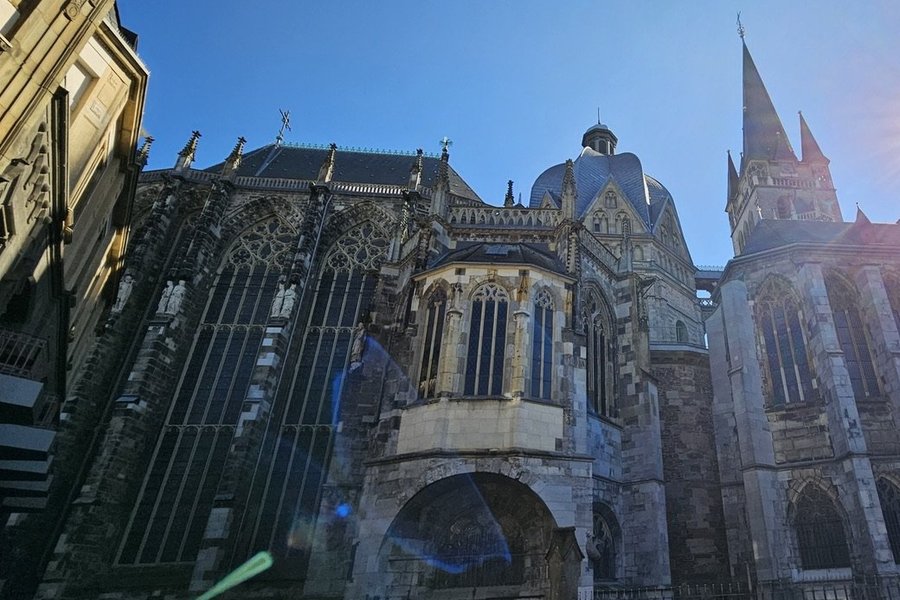
Aachen is an overall beautiful city, with green areas, picturesque streets and a lively atmosphere. Of course the highlight there is the Aachen Cathedral, a magnificently preserved building, that showcases the grandeur the city once had. As a Greek, the inside of the church really reminded me of Byzantine churches, with mosaics adorning the walls, while the cupola had a more western twist. Still, this is not a church that someone will expect to find in such northern latitudes. I think it is a really great roadtrip from Cologne, and if anyone finds themselves there, should drive to Aachen.
Keep reading 0 comments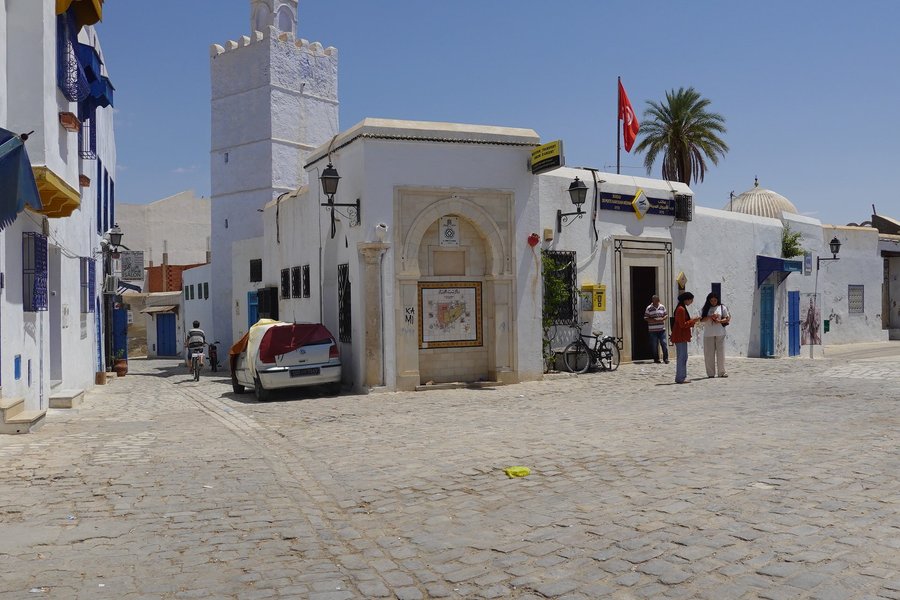
We stayed at the Continental Hotel, which is convenient as it is located across the street from the Aghlabids pools, where the city's tourist office is located. Just go up to the terrace of the tourist office to get a good view of the pools, which were unfortunately being treated when we came.
After paying the entrance fee (12 DT) to the various medieval sites of Kairouan: The Aghlabid Basins, the Great Mosque, the Okba Mosque, the zaouïa of Sidi Abid el-Ghariani, Abi Zâmaa and Sidi Amor Abada and the Museum of Islamic Art of Raqqada, we went to the Great Mosque on foot.
I absolutely wanted to visit one of the highest spiritual places of Islam since this mosque was built only in 48 of the Hegira calendar (670 AD). The building that we admire now dates from 836 AD and served as a model for many other mosques. I was afraid of being swept away by a swirling crowd of pilgrims, but it was not the case: no one was there. The central courtyard is accessible provided that the bare legs of these gentlemen are hidden under a square of cloth lent at the entrance and a hijab for the ladies on their heads. The staircase in the courtyard where Muslim women take pictures (The photo here) has no technical use. Its flight of steps would be symbolic because it leads nowhere except infinity, a theme that Islamic geometric patterns take up on ceramic tiles: these patterns have …
Keep reading 0 comments